Alpine Fault at Gaunt Creek
Article for mature and senior travellers visiting New Zealand and in particular the South island. Techtonic activity is always close and this article shares some information with the reader joining a small group tour as a couple or solo traveller.
10 Jan 21 · 5 mins read

The Alpine Fault
By Marco Stojanovik
The Alpine Fault is a geological fault that stretches almost the entire length of the South Island of New Zealand. With a clear geological record of rupturing around every three centuries or so, it poses one of the biggest natural threats to New Zealand. Movement along this active fault over the last 12 million years has uplifted the Southern Alps and helped shape the South Island landscape we know today.
It begins at its southernmost tip at the northern side of the entrance to Milford Sound in Fiordland National Park. From here its route is marked by escarpments, running northeast through the mountains behind Martins Bay, along the coast beneath the Southern Alps to Hokitika. It then turns inland, passing through the Lewis Pass Scenic Reserve and travelling northwards until it frays into four main faults that extend to the east coast.
This article explores the nature of the Alpine Fault, its appearance at Gaunt Creek, and the estimated extent of a looming large earthquake caused by a slip in the fault. It is intended as background reading for for Odyssey Traveller’s Tour of New Zealand’s South Island, during which we stop at Gaunt Creek to witness the exposure of its two tectonic plates.

A Boundary Between Crustal Plates
The Alpine fault forms the on-land boundary between the Australian and Pacific and crustal plates. The Australian Plate was originally part of the ancient southern continent of Gondwana, which included the landmasses that are now Australia, Antarctica, India, Africa and South America. This super continent began to break up about 185 million years ago, but Australia, India, and Antarctica still remained connected for some time. Eventually, 100 million years ago, India broke away and moved northward, with Antarctica too going its own way 55 million years later.
Today the Australian Plate includes not just the continent of Australia but also parts of New Zealand and New Guinea and a bit of the Indian Ocean basin. The Pacific Plate is even bigger, most of it lying beneath the Pacific Ocean.
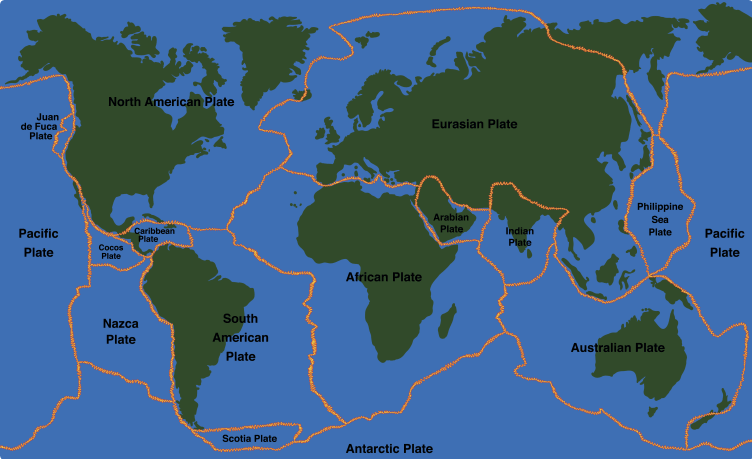
Both plates are constantly moving. The Australian Plate, on the western side of New Zealand, is moving eastwards. The Pacific Plate, on the eastly side of New Zealand, is moving westwards. As you might imagine, with two colossal bodies moving against each other, their coexistence is never gentle. Enormous pressure builds which must eventually be released through earth movement. The result is a major earthquake along the fault line. The last one occurred back in 1717 and, with the earthquakes occurring every 300 years or so, another one is due just about now.
Gaunt Creek
Gaunt Creek, near Whataroa on the West Coast, is one of the few places in the world where you can actually see and touch a plate boundary fault line. Here and nowhere else, a slip has exposed the Alpine fault; one can clearly see the Australian and Pacific plates pressing together and even stand with a foot on each tectonic plate.
It appears as a gash of minty green cataclasite, or fault rock, against a sharp line of brown glacial gravels in a grey landscape. All around, slips and shakes had carved the landscape into faces, grooves, cuts, and spikes.
Not an entirely visually striking land feature, its impressiveness may even be lost on those unaware of its significance. But, as it’s been like this since the last huge shake in 1717, to those in the know it stands as a record of what has been and a warning of what is to come.
A Large Earthquake Looms
Nobody can predict exactly when the Alpine Fault will next rupture but, tracing its geological record, it seems to occur around every three centuries. Analysis of sediments deposited by previous earthquakes shows the last one here was in 1717, give or take a year or two. Before that, in descending order, they occurred in 1620, 1430, and 1100.
In all, scientists have found that the fault has generated magnitude 8-plus quakes 27 times during the past 8000 years, averaging once in every 291 years, plus or minus 23 years. It seems then we may be on borrowed time, with these scientists calculating a 30 per cent probability that another one will occur in the next 50 years.
And they expect the next one will be one of if not the largest earthquakes New Zealand has ever experienced. The length of the rupture will most likely be up to 400 kilometres, beginning in South Westland and unzipping the crust northwards up the coast for as much as three minutes, with a likely magnitude of 8+ on the Richter Scale. It will be felt throughout the South Island and the lower North Island and as far away as across the Tasman in Sydney.
And it won’t just be large, but devastatingly strong too – an all-out savage brawler. In some places the force will result in a horizontal earth shift of up to 8 metres, and a vertical displacement of 4 metres.
Millions of cubic metres of rock and scree will collapse from mountain slopes and whole areas will be buried. Rock avalanches falling into water bodies will cause tsunami in lakes, rivers, and fiords. Certain rivers will flood, and new ones be created.
Significant building damage can be expected in the Queenstown Lakes District, while damage in other parts of Otago will be irregularly distributed depending on the landforms and the built environment. Bridges will be wrecked and roads will suffer serious damage, some areas becoming isolated immediately. Electricity will be cut, communication systems including cell phones put down, water and sewage systems ruined, health and and social services disrupted, and businesses closed.

At least now though locals have a greater appreciation of what is in store than they did only 10 years ago. As a result of the work of scientists, civil defence workers, and incredible Deep Fault Drilling Project at Gaunt Creek, they are able to better prepare for what looms.
Alpine Fault Tours
Odyssey traveller visits the Alpine Fault at Gaunt Creek as part of our Tour of New Zealand’s South Island. This tour is for up to 15 people, typically mature and senior travellers joining as a couple or as solo traveller. It is will be led by an Odyssey tour guide and joined by expert local guides who will impart their knowledge about the history, Maori culture, and landscapes of places we will visit. Our itinerary gets off the beaten track, following the east coast of the South Island through to the West coast, before returning to Christchurch.
The arrival of Europeans – mostly British settlers – in New Zealand set in motion a startling and ultimately largely successful co-existence with the Maori people that will be the focus of this small group South Island tour of New Zealand.
This tour has periods of free time built into the itinerary, allowing you to explore each destination at your own pace, and choose from a variety of available activities. This way, we make sure that there is something to enjoy for every kind of traveller.
Odyssey Traveller has been conducting educational tours since 1983 designed for small groups of mature and senior travellers, focusing on the history, culture, wildlife, and architecture of our destinations. Our small group tours are typically between 6 to 12 people, and are cost inclusive, encompassing accommodation, attraction entries, and transport. For more information, click here, and head to this page to make a booking.
Articles about New Zealand published by Odyssey Traveller:
- Questions about New Zealand
- Foundations for democracy in New Zealand: 900s – 1945
- Definitive Guide to Auckland, New Zealand
- Wellington
- Auckland
For all the articles Odyssey Traveller has published for mature aged and senior travellers, click through on this link.
External articles to assist you on your visit to New Zealand:

17 days
Feb, Mar, OctSmall group tour of New Zealand's South Island
Visiting
Escorted 17 day small group tour of the West and East coast of New Zealand’s South island. Off the beaten track, for like minded people curious about history, culture, wine and landscapes. Your tour director and local guides share their knowledge with you the traveller on this New Zealand tour for senior travellers.
From A$13,365 AUD
View Tour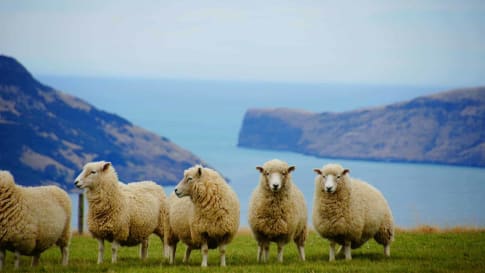
14 days
Aug, Sep, Oct, Nov, Feb +1Small group tour of New Zealand's North Island
Visiting
Escorted 13 day small group tour of the East coast of New Zealand’s North island. Off the beaten track, for like minded people curious about history, culture, wine and landscapes. Your tour director and local guides share their knowledge with you the traveller on this New Zealand tour for senior travellers.
From A$11,495 AUD
View Tour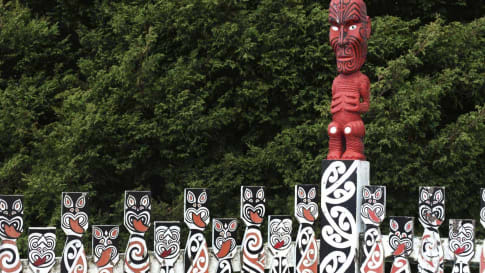
17 days
Oct, Feb, Apr, Sep, MarNew Zealand: An Odyssey Down Under
Visiting
A guided small group tour of both the North island and the South island. Your travel itinerary includes Auckland, Rotorua, Milford Sound, Queenstown and Christchurch. Maori culture also forms part of the journey to provide a memorable New Zealand tour experience.
From A$12,595 AUD
View Tour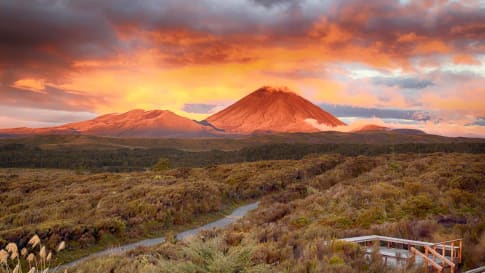
14 days
Mar, Sep, NovSmall group walking tour of New Zealand
Visiting
Escorted 14 day small group walking tour of New Zealand. Off the beaten track, for hiking fit like minded people curious about history, culture wine and landscapes.
From A$13,995 AUD
View TourArticles

Fiordland National Park, New Zealand
Explore the sights and wonders of Fiordland National Park, home to some of New Zealand's most stunning natural landscapes. Odyssey offers small group tours for mature and senior travellers couples and solo travelers to Fiordland and New Zealand.
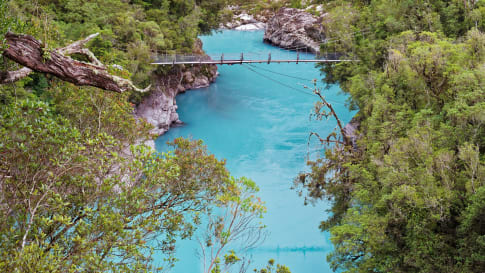
Hokitika, New Zealand
Hokitika, New Zealand The epitome of a Gold Rush ‘boomtown’, Hokitika, on the West Coast of the South Island of New Zealand is now officially known as the ‘cool little town’, an ideal gateway for…
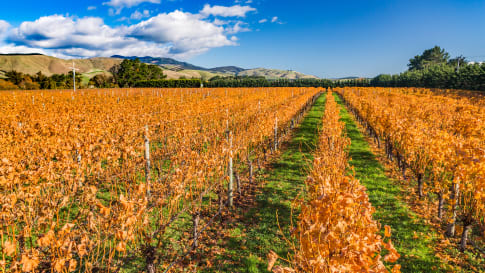
New Zealand Wine - a Story
Small group tour of New Zealand visit Chardonnay producing wineries in Gisborne, the Hawke's Bay region and Napier, famed for its Bordeaux blend reds, and in the quaint village of Martinborough, Wairarapa. Escorted educational tours for mature and senior couples and solo travellers.

Te Anau, New Zealand
Te Anau is a small town on the South Island of New Zealand, often labelled as the gateway to the wilderness and amazing scenery of Fiordland.
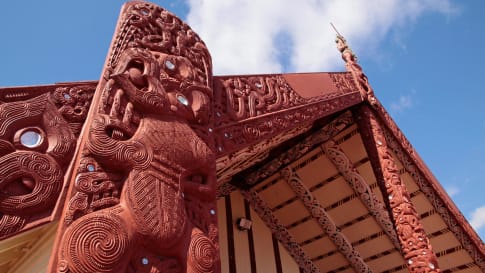
The Maori, New Zealand
Explore the history and rich heritage of the Maori people, the first and original inhabitants of New Zealand. Odyssey offers small group tours for mature and senior travellers, couples, and solo travelers to sites across New Zealand.

Tongariro National Park, New Zealand
Explore on a small group walking tour of New Zealand for active mature or senior travellers the Tongariro crossing. Suitable for couples or solo travellers who enjoy hiking/walking tours.

